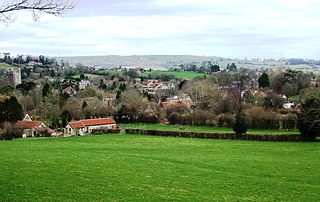
Chew Stoke is a small village and civil parish in the affluent Chew Valley, in Somerset, England, about 8 miles (13 km) south of Bristol and 10 miles north of Wells. It is at the northern edge of the Mendip Hills, a region designated by the United Kingdom as an Area of Outstanding Natural Beauty, and is within the Bristol/Bath green belt. The parish includes the hamlet of Breach Hill, which is approximately 2 miles (3.2 km) southwest of Chew Stoke itself.
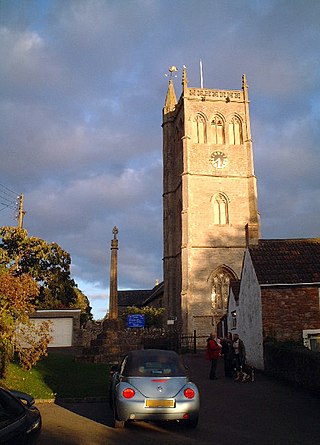
Bleadon is a village and civil parish in Somerset, England. It is about 4 miles (6.4 km) south of Weston-super-Mare and, according to the 2011 census, has a population of 1,079.
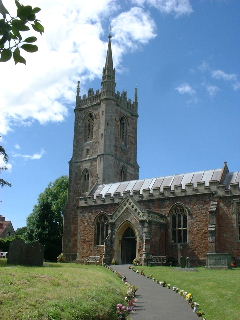
The Anglican St Andrew's Church is on the outskirts of Chew Stoke, within the English county of Somerset. The church, parts of which date from the 15th century, is a Grade II* listed building.

The Church of St Mary Magdalene in Chewton Mendip, Somerset, England, was built in the 1540s and has been designated as a Grade I listed building. It is dedicated to Jesus' companion Mary Magdalene.
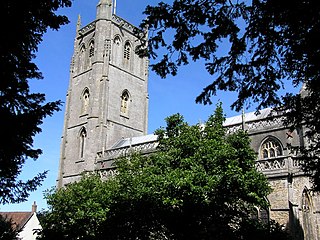
The mainly 15th-century parish Church of St Andrew in Banwell, Somerset, England, is a Grade I listed building.

The Church of St James in Winscombe, Somerset, England, has 12th- or 13th-century origins but the present building dates from the 15th century. It is a Grade I listed building.

The Church of St Peter in Huish Champflower, Somerset, England dates from the 15th century, with the north aisle being built in 1534. It has been designated by English Heritage as a Grade I listed building.

The Church of St John the Baptist in Axbridge, Somerset, England, was built in the 13th century and has been designated as a grade I listed building.
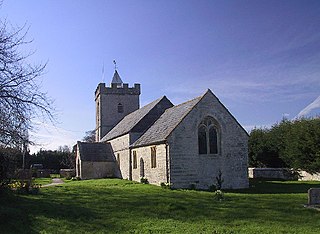
The Anglican Church of St Peter in Catcott, Somerset, England dates predominantly from the 15th century, but still includes some minor 13th century work, and has been designated as a Grade I listed building.
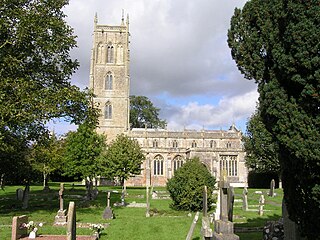
The Church of St Andrew in Cheddar, Somerset, England dates from the 14th century and has been designated as a Grade I listed building.
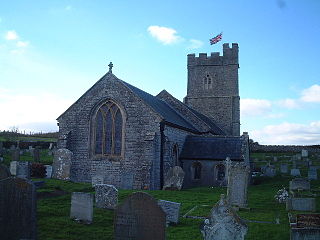
The Church of St Mary in Berrow, Somerset, England dates from the 13th century and was restored in the 19th. It has been designated as a grade I listed building.

The Church of St Michael at Brent Knoll, Somerset, England dates from the 11th century but has undergone several extensions and renovations since then. It has been designated as a grade I listed building. There is a Norman doorway however the rest of the church dates from around 1290. The north aisle was built in the late 15th century.

The Church of St George is a Church of England parish church in Beckington, Somerset, England. It is a Norman church, dating from the 14th century. It has been designated as a Grade I listed building.

The Church of St Mary the Virgin in Barrington, Somerset, England dates from the 13th century and has been designated as a Grade I listed building.

The Church of St Mary in Ilminster, Somerset, England, dates from the 15th century and has been designated as a Grade I listed building.

The Church of St John the Baptist in Yeovil, Somerset, is a Church of England parish church.

The Church of St Andrew in Chew Magna, Somerset, England dates from the 12th century with a large 15th-century pinnacled sandstone tower, a Norman font and a rood screen that is the full width of the church. It is a Grade I listed building.

The Church of St James is a redundant church in Cameley, Somerset, England, dating from the late 12th century. It is recorded in the National Heritage List for England as a designated Grade I listed building, and is in the care of the Churches Conservation Trust. It is dedicated to St. James of Compostela. The church was declared redundant on 1 January 1980, and was vested in the Trust on 18 March 1981.

The Anglican Church Of St Andrew in Blagdon, within the English county of Somerset, was built in the 15th century. It is a Grade II* listed building.

The Anglican Church of the Holy Cross in Babcary, Somerset, England, was built in the 14th century. It is a Grade II* listed building.




















